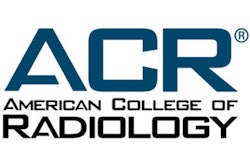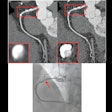On July 1, a new era of intense scrutiny and documentation will arrive for CT and other imaging modalities, thanks to new Joint Commission accreditation requirements that become effective on that date. Unfortunately, most radiology departments aren't remotely ready to fulfill the requirements, according to a talk at the International Symposium on Multidetector-Row CT.
And while the Joint Commission rules will make a big splash, they're not alone in the pool. New guidelines for CT protocols and radiation dose reporting are coming from every direction, from state laws to federal legislation, to say nothing of accreditation standards from the American College of Radiology (ACR).
Each set of rules is doing its part to close the door on more informal ways of practicing radiology, according to Dr. Myron Pozniak, a professor of radiology at the University of Wisconsin. Still, the Joint Commission is something of a cannonball.
"Starting [July 1] radiology is going to be under much greater scrutiny when the Joint Commission comes walking through the hospital," Pozniak said.
Some incentive
The new Joint Commission accreditation standards codify a level of scrutiny for CT practices that is on top of recent Medicare requirements mandated by the Protecting Access to Medicare Act of 2014, which are built into reimbursement. The requirements cover all CT, PET/CT, and SPECT/CT exams except for interventional studies or those acquired in an inpatient setting.
The Medicare changes work by incentivizing quality -- and not in a gentle way, Pozniak said.
"I thought incentives meant you get a prize when you do something right," he said. "Well, this is a negative incentive. If you aren't following the [National Electrical Manufacturers Association] NEMA standard XR 29-2013, you will have a reduction in your technical reimbursement of 5% next January -- and 15% in 2017."
XR 29-2013, also known as the Medical Imaging and Technology Alliance (MITA) Smart Dose standard, requires that every CT system include four key features: DICOM radiation dose structured reporting; CT dose check, including dose notifications and alerts; automatic exposure control (AEC); and pediatric and adult reference protocols for patients of different sizes.
Most radiologists are already up to speed on DICOM dose reporting, and most have dose alerts on their scanners along with AEC, Pozniak said. But does everyone have multiple sets of preloaded protocols set up for different body sizes and patients? No, everyone does not.
"If you don't do this by 2017 -- let's say you do 10,000 patients a year -- your hospital will suffer almost a half million dollars in revenue loss, and they will be knocking on your door," he said.
Equipment, personnel, and documentation
MITA has committed itself to ensuring that 100% of scanners in the U.S. are equipped to handle all of the requirements, but, unfortunately, things haven't been heading that way, according to Pozniak. At last count, there were 13,000 CT scanners in the U.S., only two-thirds of which are complaint with the standard. Regardless, the Joint Commission will start assessing radiology relative to the newly published standards.
"Hospital administrators are all over this, and hopefully they've been talking to you," he said.
The Joint Commission has identified several areas to evaluate in MRI, CT, PET/CT, and nuclear medicine practice; the accreditation standards incorporate changes in each of them:
- Environment of care
- Human resources
- Medication management
- Provision of care, treatment, and services
- Performance improvement
The Joint Commission's CT review requirements include quarterly review of optimal radiation dose, activities to maintain the quality of diagnostic images, annual measurement and verification of displayed CT dose index volume (CTDIvol), and shielding design.
Specific requirements
Human resource requirements include qualification for physicists and training for technologists.
"They're going to be looking at annual training for techs," among other things, and asking the following, Pozniak said:
- Do you document the radiation dose for every study in a retrievable format?
- Do you verify that patients really need the CT scan being performed, and do you protocol them?
- Do you consider the patient's age when you protocol the patient, and are your protocols up to date?
- Are you going to meetings and looking at the literature?
- Are you incorporating new ideas in your protocols, and do you review them on a regular basis?
The Joint Commission wants to be sure that radiation dose is assessed on every study, and that patients who receive inappropriate doses are identified. They want every case of higher-than-optimal dose to be reviewed, analyzed, and documented to determine what went wrong and that the problem has been fixed. Doses must also be compared to national benchmarks, Pozniak said.
"This is a lot of stuff coming down the pipeline, but what's most important is not just doing it but documenting it," he said. When the [Joint Commission] reviewer comes to radiology, they're going to ask to see documentation that you've been accomplishing these things."
How ready are you?
Pozniak's group tested the readiness of CT providers with a survey developed from government and industry research and direct observation. The survey included 87 elements covering leadership, practices, and technology, with responses from 106 healthcare facilities. The results below, selected from questions that apply specifically to Joint Commission rules, show plenty of room for improvement.
| Compliance with Joint Commission standards | |
| Procedure | Percentage of sites complying |
| Annual equipment quality check | 100% |
| Annual training for technologists | 25% |
| Activities to maintain equipment quality | 92% |
| Documentation of radiation dose index for every scan | 29% |
| Adoption of protocols based on current standards of care | 39% |
| Periodic review of protocols | 50% |
| Prescan verification of patient information and protocol | 23% |
Among the survey's worst moments, it turns out that only about one-fourth of technologists are being trained every year and are documenting dose for every scan, Pozniak said.
Documenting dose came in at just 29% because, for many users, radiation dose levels aren't instantly retrievable. And only 23% said they protocol every scan before acquiring it, a dismally low percentage, according to Pozniak.
But ready or not, the Joint Commission is going to start walking through facilities on July 1, and radiology will find itself facing unprecedented levels of scrutiny, he said.
"Preparation and documentation are going to be critical to satisfy these surveyors," he said. "So good luck."



















